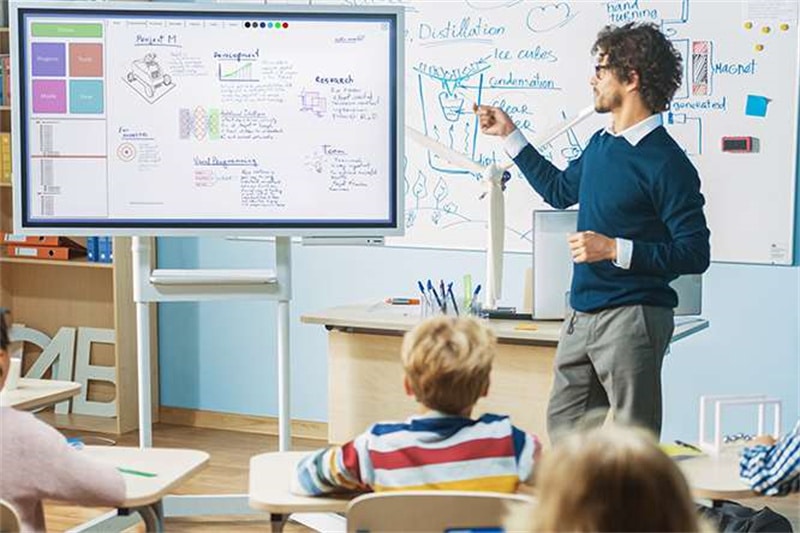In the rapidly evolving digital age, technology plays an integral role in all spheres of life, especially education.
The landscape of education is changing drastically, with traditional teaching methods making way for digital platforms. This article from ResearchPaperGuru.com will delve into the effective strategies for optimizing education with technology.
Integrating Technology in the Classroom: Best Practices and Benefits

The integration of technology in classrooms has transformed the dynamics of teaching and learning, paving the way for a more interactive and engaging environment. It is essential to understand the best practices and the potential benefits that technology brings to the educational sphere.
Best Practices for Technology Integration
When it comes to integrating technology, educators should consider the pedagogical principles and learning objectives. First, technology should not just replace traditional teaching methods but enhance them. The technology chosen should be relevant and add value to the learning process. Second, educators should ensure that the technology is accessible and inclusive, catering to the varied needs of students. Finally, continuous training for teachers is crucial to keep up with the evolving technology trends and effectively implement them in the classroom.
Benefits of Technology in Education
Integrating technology in education holds numerous benefits. It fosters an active learning environment by encouraging students to participate, collaborate, and engage with the content. Technology also allows for personalized learning, catering to the individual needs of students. Moreover, it offers a plethora of resources and tools, enhancing the scope of learning. Most importantly, technology prepares students for the digital age, equipping them with the necessary skills for the future.
Personalized Learning with Educational Technology Tools: Customizing Education for Individual Needs
Education is not a one-size-fits-all model. Each student has unique learning needs and preferences. With the advent of technology, personalized learning has become feasible and effective. Educational technology tools play a vital role in customizing education for individual needs.
The Role of Educational Technology Tools
Educational technology tools have revolutionized the way education is delivered and received. From interactive whiteboards and digital textbooks to online learning platforms and mobile apps, these tools offer a range of options to customize education. They provide personalized learning paths, adaptive content, and immediate feedback, making learning more effective and engaging.
Customizing Education for Individual Needs
Personalized learning is about tailoring education to meet the individual needs of students. Technology enables this by providing data-driven insights into the students’ learning patterns, strengths, and areas of improvement. It allows educators to differentiate instruction, adapt content, and provide targeted support, enhancing the learning outcomes.
Blended Learning Models: Combining Online and In-Person Instruction
Blended learning models combine the best of both worlds – traditional face-to-face instruction and online learning. This approach offers a flexible and diverse learning environment, catering to the varied needs of students.
The Essence of Blended Learning Models
Blended learning models are about creating a balance between online and in-person instruction. They integrate technology into the classroom, enhancing the learning experience. These models provide flexibility, allowing students to learn at their own pace, place, and time. They also foster a collaborative and interactive learning environment, promoting active learning.
Combining Online and In-Person Instruction
The blend of online and in-person instruction offers a holistic learning experience. While in-person instruction provides direct interaction, immediate feedback, and social learning, online instruction offers flexibility, personalized learning, and a wide range of resources. This combination fosters a more engaging and effective learning environment.
Data-Driven Decision Making in Education: Leveraging Technology for Insights and Improvement

Data-driven decision making is a powerful tool in education. With technology, educators can leverage data for insights and improvement, enhancing the effectiveness and efficiency of education.
The Power of Data in Education
Data has the potential to transform education. It provides valuable insights into the learning process, revealing patterns, trends, and gaps. It enables educators to understand the impact of their teaching strategies, assess student performance, and make informed decisions. Furthermore, data allows for continuous improvement, facilitating the refinement of teaching practices and learning materials.
Leveraging Technology for Data-Driven Decisions
Technology plays a pivotal role in data-driven decision making. It offers tools and platforms for collecting, analyzing, and visualizing data, making it accessible and understandable. Moreover, technology enables real-time data tracking, providing immediate feedback and allowing for timely interventions.
In conclusion, technology is a powerful enabler in education, transforming the way teaching and learning happen. By integrating technology in the classroom, customizing education with educational technology tools, adopting blended learning models, and leveraging data-driven decision making, we can optimize education, making it more effective, engaging, and inclusive. As ResearchPaperGuru.com, we are committed to exploring and promoting the best practices in education technology.
